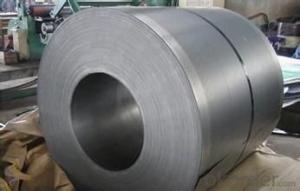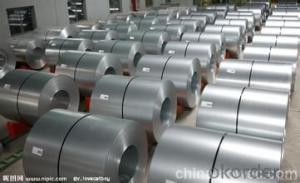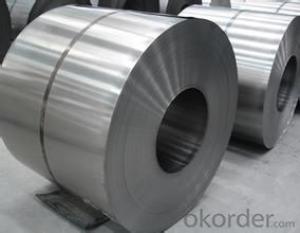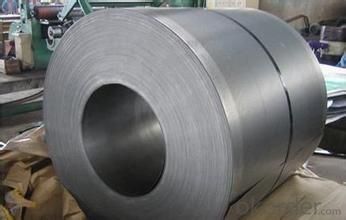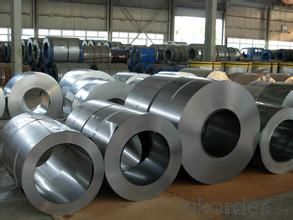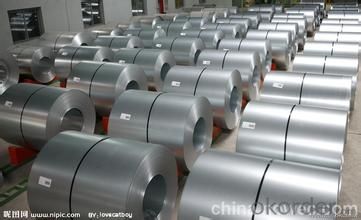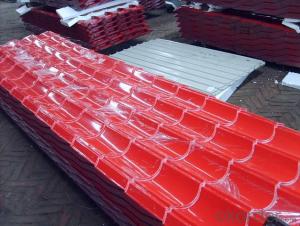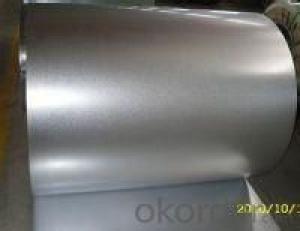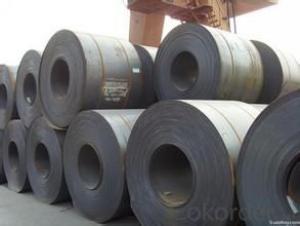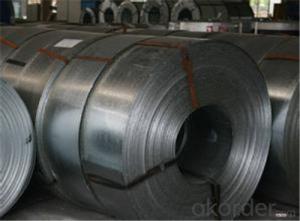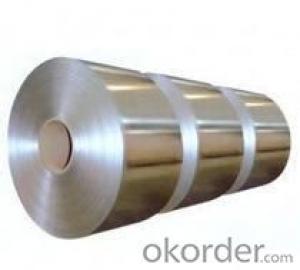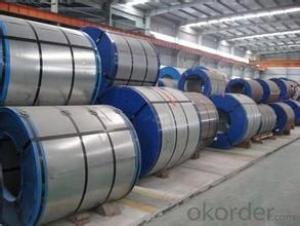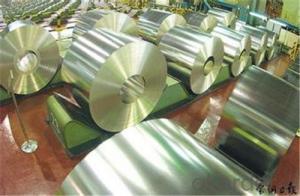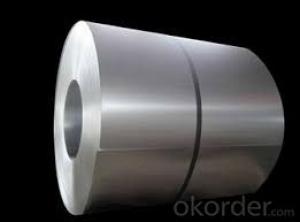Excellent Cold Rolled Steel Coil / Sheet in CNBM
- Loading Port:
- Tianjin
- Payment Terms:
- TT OR LC
- Min Order Qty:
- 100 m.t.
- Supply Capability:
- 5000000 m.t./month
OKorder Service Pledge
OKorder Financial Service
You Might Also Like
Description:
The raw material of cold rolled steel coil/sheet is high quality hot rolled product, and after pickling, kinds of new technology and new process of global cold rolling production have been applied. Therefore the manufacturing, home appliance, automobile etc. Quality of the goods could be guaranteed. The finished product has a variety of excellent capabilities, such as continuous rolling, degreasing, annealing, skin pass, slitting and cut to length line etc. Along with it many rocessing capability and smooth, flat surface. It’s widely used in outdoor and interior decoration, furnishing
Specification:
COLD ROLLED STEEL | |
Thicknenss | 0.10mm-4.00mm |
Width | 600mm-2000mm |
Sheets length | 1200-6000mm |
Coil inner diameter | 508-610mm |
Surface treatement | matt finish/bright finish,oiling/dry, bright anneal/black anneal |
Coil weight | 3-5t |
Package & Delivery
Package details: Standardseaworthy packing for international delivery.
Delivery: According to theexact quantity of your order.
Images:
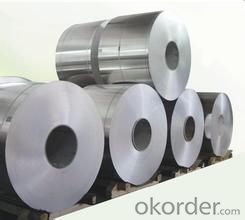
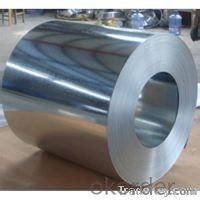
Quality of the goods could be guaranteed. The finished product has a variety of excellent capabilities, such as continuous rolling, degreasing, annealing, skin pass, slitting and cut to length line etc. Along with it many rocessing capability and smooth, flat surface. It’s widely used in outdoor and interior decoration, furnishing
- Q: Many gerber knives are made out of what gerber calls high Carbon steels and I was wondering if anyone knew exactly what is this mysterious steel.
- Carbon, when added to steel increases the hardness of the metal. The higher the carbon content the harder(pure carbon = diamond) the blade will be and the longer it will hold its sharpened edge. Too much carbon however can make it too brittle to use as a blade. iron, carbon and chromium(for the stainless in stainless steel) mixed in the right portion makes a high carbon stainless steel knife. All of which is kinda pointless if the blade is not forged correctly.
- Q: How are steel coils used in the packaging industry?
- Steel coils are used in the packaging industry to create sturdy and durable packaging materials, such as metal drums, cans, and containers. The coils are unwound and shaped into the desired form, providing a strong and protective barrier for various products during storage and transportation.
- Q: What are the different types of steel coil recoiling methods?
- There are three main types of steel coil recoiling methods: slit edge recoiling, mill edge recoiling, and oscillated recoiling.
- Q: What is the minimum temperature that steel coils can withstand?
- The minimum temperature that steel coils can typically withstand is around -40 degrees Celsius.
- Q: What are the dimensions of steel coils used in the HVAC industry?
- The dimensions of steel coils used in the HVAC industry can vary depending on the specific application and requirements of the system. However, there are standard dimensions that are commonly used. One common dimension for the width of steel coils used in HVAC systems is around 24 inches (or 2 feet). This width allows for efficient airflow and heat transfer within the system. The thickness of the steel coils can also vary, but a common range is between 0.020 inches to 0.060 inches. Thicker coils may be used for heavy-duty applications or systems that require higher performance, while thinner coils are suitable for lighter-duty or more cost-effective systems. As for the length of the coils, it can also vary depending on the specific needs of the HVAC system. Coils are often produced in standard lengths, such as 50 feet or 100 feet, but they can be customized to meet specific requirements. It is important to note that these dimensions are just general guidelines and can vary depending on the manufacturer, supplier, and specific HVAC system requirements. Consulting with industry professionals or manufacturers can provide more specific information on the dimensions of steel coils for a particular HVAC system.
- Q: Can anyone suggest a free font that looks like steel with rivets? I'm looking for something industrial looking.
- Steel okorder /
- Q: Can steel coils be coated with electrically conductive materials?
- Yes, steel coils can be coated with electrically conductive materials. This coating process enhances the electrical conductivity of the steel coils and allows them to conduct electricity efficiently.
- Q: I am refinishing a table and on my can of polyurethane, it indicates not to sand with steel wool prior to application. Why is that?
- it can turn dark! use 400 to 600grit wetdry sandpaper watch your edges!!!
- Q: How are steel coils used in the production of storage tanks and silos?
- Steel coils are an essential component in the production of storage tanks and silos due to their strength and durability. These coils are typically made from high-quality steel and are processed through various manufacturing techniques to attain the desired thickness and shape. In the production process, steel coils are first uncoiled and then cut into specific sizes and lengths to meet the requirements of the storage tank or silo design. The coils are then shaped into cylindrical sections, using bending and rolling machines, to create the main body of the tank or silo. Once the desired shape is achieved, the coils are welded together to form a continuous and secure seam. This welding process ensures that the tanks and silos are leak-proof and can withstand the pressure exerted by the stored materials. Furthermore, steel coils also play a crucial role in reinforcing the structure of storage tanks and silos. They are often used to create the roofs, bottoms, and other structural components of these storage units. The strength and resilience of steel make it ideal for withstanding the weight of the stored materials and any external forces that may be exerted on the tank or silo. Additionally, steel coils can be coated or treated with protective materials to enhance their resistance to corrosion and extend their lifespan. This is particularly important for storage tanks and silos that are used to store corrosive substances or are exposed to harsh environmental conditions. Overall, steel coils are a fundamental element in the production of storage tanks and silos, providing the necessary strength, durability, and structural integrity required for these storage units.
- Q: How are steel coils inspected for yield strength?
- Steel coils are inspected for yield strength through a series of testing methods. The most common and widely used method is the tensile test. In this test, a small sample is taken from the steel coil and subjected to a controlled load until it reaches its yield point. During the tensile test, the sample is gradually stretched until it deforms and ultimately breaks. The load and elongation data are continuously recorded during this process. The yield strength is then determined by identifying the point on the stress-strain curve where the material begins to exhibit plastic deformation or permanent elongation. Another method used to inspect steel coils for yield strength is the hardness test. Hardness is often correlated with yield strength, and therefore, a hardness test can provide an estimation of the material's yield strength. This test involves measuring the resistance of the steel coil's surface to indentation or penetration using instruments like a Rockwell or Brinell hardness tester. Additionally, non-destructive testing methods such as ultrasonic testing and magnetic particle inspection can also be employed to evaluate yield strength. Ultrasonic testing involves the use of high-frequency sound waves to detect any internal defects or inconsistencies in the material's structure. Magnetic particle inspection, on the other hand, relies on the application of magnetic fields and the use of magnetic particles to identify surface cracks or defects. Overall, various testing methods are available to inspect steel coils for yield strength. These methods provide manufacturers and inspectors with valuable information about the quality and performance capabilities of the steel, ensuring that it meets the required standards and specifications.
Send your message to us
Excellent Cold Rolled Steel Coil / Sheet in CNBM
- Loading Port:
- Tianjin
- Payment Terms:
- TT OR LC
- Min Order Qty:
- 100 m.t.
- Supply Capability:
- 5000000 m.t./month
OKorder Service Pledge
OKorder Financial Service
Similar products
Hot products
Hot Searches
Related keywords
